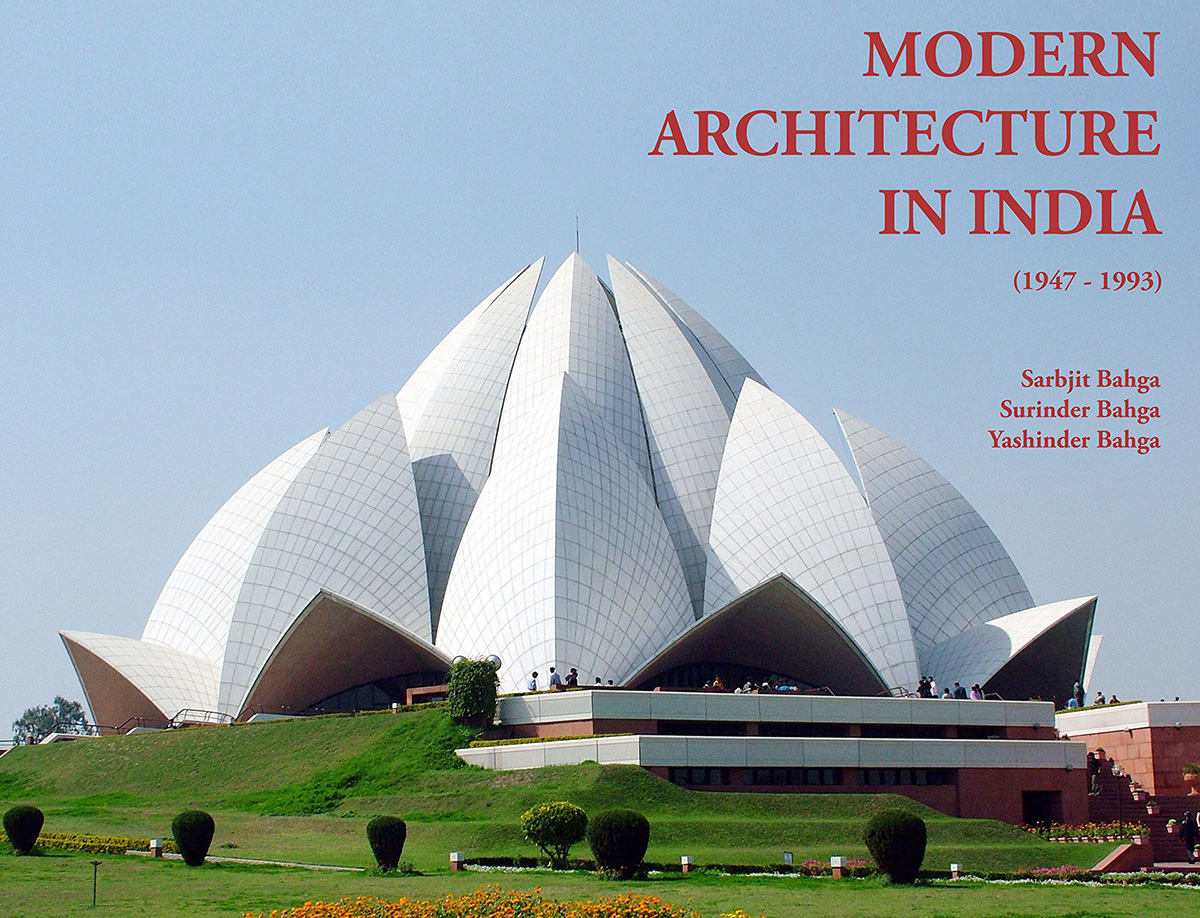Submitted by WA Contents
Book Review: Modern Architecture in India (1947-1993) by Sarbjit Singh Bahga
India Architecture News - Jun 28, 2016 - 15:41 18906 views

The book, Modern Architecture in India (1947-1993) written by Sarbjit Bahga, Surinder Bahga and Yashinder Bahga, reviewed by Sarbjit Singh Bahga, who is a member of WA and received many WA Awards in previous cycles. The book released in 2015 and focuses on Indian architecture between 1947-1993 years in four chapters.
India, the largest developing country in the world, is endowed with a rich cultural and architectural heritage. Copious works have been written on its ancient art and architecture but woefully few publications are available on its architecture after Independence. The vastness of the subject of architecture and the pace of development in the country need volumes of books to cover the entire scenario. Modern Architecture in India (1947-1993) is aimed at to have an overview of the architectural development in the country in the latter half of the 20th Century.
It discusses about 100 projects designed by 14 foreign and 53 Indian architects. The projects illustrated in this book include capital cities, towns, townships, universities, hostels, group housing and educational, cultural, sports, religious, administrative, commercial and industrial buildings. Only completed projects are featured as their qualities can be judged easily and described accurately. The book includes drawings and photographs sufficient to understand the project.
The book is divided into four Chapters:
Chapter 1, "India: Land, Climate and People", is a brief account of the country, acquainting the readers, especially foreigners, with various facets of this vast land. This chapter is well supported by a map of India showing the boundaries of the states and the locations of the projects discussed.
Chapter 2, "From Imperialism to....Indianism or Regionalism", dwells on the architectural development during the British Raj and the post-Independence period.
In Chapter 3, the authors get down to the various "Projects" under study, taking these up in the context of architecture, urban design, town planning and landscaping.
Chapter 4, "Futiristic Approach", records a few suggestions for the benefit of professionals who have embarked upon improving the built-environs.
The book was conceived of and is presented as a reference book for the use of primarily four sections of society to enable them to have an overview of the different styles of architectural development in the Indian subcontinent. the first group comprises professionals like architects, planners, engineers and builders, besides other persons engaged in building activety. This book should act as a source of inspiration to stimulate their creative instincts. The second group includes students of art and architecture, town and country planning, urban design and landscape architecture. In the absence of sufficient indigenous treatises, the institutions imparting architectural education have to rely heavily upon works from other developed nations, which only aid in importing ideas having none or very little relevance to the Indian conditions.
This book, hopefully, will provide a broad base which our institutions could use to remodel their curricula in order to have future architects capable of finding their own solutions to their problems. The third section of readership aimed at includes tourists, both Indian and foreign, on site-seeing and architectural tours. The authors have tried to adopt a simple and concise method of explaining each project, which could help them in selecting specific places of interest. The fourth section which is aimed at to reach is the general reader having sufficient interest in modern architecture. This work, it is hoped, will be of value to any serious reader who is inquisitive to know more about India.
Product Details
File Size: 494116 KB
Simultaneous Device Usage: Unlimited
Publication Date: October 20, 2015
Sold by: Amazon Digital Services LLC
Language: English
ASIN: B016Y0UKFO
